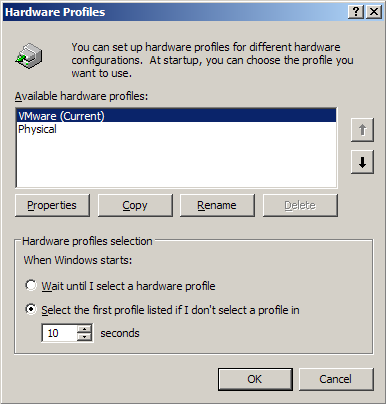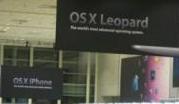Back a hundred years ago when I was studying Human-Computer-Interaction, there was much discussion about touchscreens. They mostly discussed the difference between a mouse, a touchscreen and a light pen. The latter two devices got short shrift from my lecturer as they had two issues. your arm obscured the screen your arm would get tired … Continue reading “Microsoft re-invents the past. Again.”
Back a hundred years ago when I was studying Human-Computer-Interaction, there was much discussion about touchscreens. They mostly discussed the difference between a mouse, a touchscreen and a light pen. The latter two devices got short shrift from my lecturer as they had two issues.
- your arm obscured the screen
- your arm would get tired
The recent upswing in multi-touch touchscreen technology, pioneered by Jeff Han’s amazing multi-touch demo and brought to consumers a year ago in Apple’s iPhone, has produced a lot of speculation as to the nature of computing devices. For the same reasons as above, I think touchscreens, even with haptic responses, will become an additional way to interact. It has advantages and disadvantages – it absolutely sucks for data entry in the same way that voice recognition sucks for data entry. In addition, touchscreens might be fine for 17 screens but do you really want to spend a day directly manipulating data on a 30″ LCD? Or two of them?
Let’s experiment.
Put your keyboard just ABOVE your monitor. Put your hands on your keyboard. Now imagine that being your new work position? Of course – it’s going to be bollocks.
None of this stops Microsoft re-announcing multi-touch like it’s new all over again.
This is what happens when someone innovates and Microsoft photocopies. There will be poor implementations of multi-touch for the next few years from Microsoft (remember that Windows 7 is still slated for 2010) just as they have ‘bullet pointed’ every innovation from other companies.
“Multi-touch? Sure, our OS has multi-touch. It’s shit and doesn’t work right but our end users will blame themselves for not being better at using it so we’ll get away with our shoddy implementation. Anyone for Foosball?
This is the pattern I’ve seen repeated now for over a decade with Microsoft. I remember mentioning cool new technologies and my friend countering them with “Yeah, Windows has that”. One of the conversations had this gist…
Me: Cool new feature in Mac OS – Location Manager. You select this option and with one click can choose which network ports to activate, whether sharing should be on or off and so forth. It’s a simple selection – it’s great – takes all the work out of changing locations.

Friend: Yeah, Windows has had that for ages.

Me: It requires a reboot? How do you set your options? You have to edit the configs directly? Uh, that sucks…
Friend: Heh. MACINTOSH stands for “Macintosh Always Crashes If Not Then Operating System Hangs!
Me: I have to go over there now…
It never mattered on the QUALITY of the implementation, just that the bullet point was fulfilled. This was repeated again and again over the last two decades and it just staggered me that people who were, to all intents and purposes intelligent, still endured the awfulness of Windows.
Back in 1996 when I was living in Belfast, Apple wasn’t doing so well and I refrained from convincing a friend to buy a Mac. He had no intention anyway – but I remember him laughing at our Macs afterwards (he’d gotten excellent PC-buying advice consisting of hearsay about how Macs were crash-happy). Five minutes at his flat showed how he worked with his PC. He screamed at it. He bashed the monitor. He repeated data entry again and again because Word simply couldn’t handle the large files he was throwing at it. In the end he finished his dissertation on a Mac he borrowed from me and yet still, even in the face of superior capability (on an older, slower machine) still remained a PC user.
It was around then I came to the conclusion that as well as perceptive, cognitive and emotional intelligence, there must be some sort of ‘common sense’ intelligence that was missing. It’s one thing to never use a Mac and be ignorant of the advantages. It’s another thing entirely to have them spelled out, demonstrated, used and then still defend your shoddy technology choices.
This neatly segways into two conversations I had recently about the rumours surrounding the new iPhone. Cheaper prices? Wider distribution? There’s a sizeable number of people who have iPhones now who do not want the general public to have iPhones – they enjoy the exclusivity.
We only have to wait a few days to see what is happening with the iPhone. And two years to see them poorly copied on Windows.




